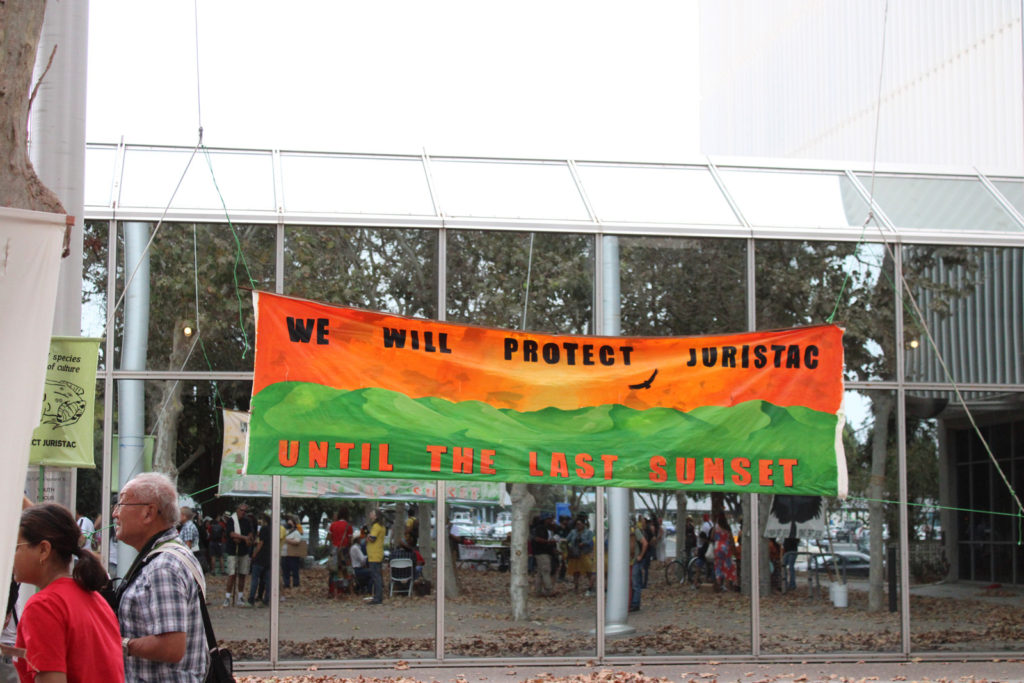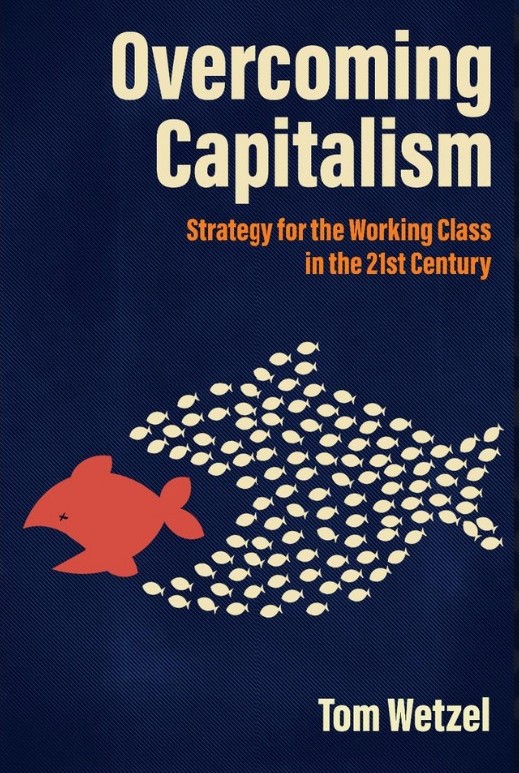Juristac is the indigenous name for a location in the coastal foothills of California near Gilroy. The site is located on the 403 acre Sargent Ranch. After the Sargent Ranch went bankrupt, a firm bought the ranch and now wants to develop a massive sand and gravel pit on the site — an action that would be devastating for wildlife and destroy the natural beauty of a site that has great significance for the Ahma Mutsun Tribal Band. The Ahma Mutsun Tribal Band are descendants of the indigenous Ohlone-speaking tribe who lived in that part of California at the time of Spanish conquest. Juristac was in roughly the center of the territory of the Mutsun tribe which stretched in the early 1800s from the Pajaro River valley around Watsonville through Gilroy to San Benito County. At the time of Spanish conquest the Mutsun people lived by “proto-agriculture” — cultivating certain plants and engaging in stewardship practices to protect oak and other native forest plants. Juristac has great significance for the descendants of the Mutsun tribe as this was the location where the tribe held their celebrations and religious rituals.
The Ahma Mutsun Tribal Band put on a well organized demonstration in opposition to the quarry project on September 10th in front of the Santa Clara County administration building in San Jose. The elected chairman of the Mutsun tribe, Valentin Lopez, gave a powerful and informative speech. Originally the Spanish army conquered this area in the early 1800s. At that time they rounded up the native Mutsun people and put them into the concentration camps called “missions” — at San Juan Bautista and Santa Cruz. During the 24 years of operation of the mission system, Lopez pointed out that 19,000 Indians died in those missions. In addition to having Christianity shoved down their throats, they were being worked to death. A priest at one of the missions sent a letter to the Pope saying the Indians should not be regarded as human, but as a species of monkeys. If one of the “Mission Indians” tried to escape, the Spanish army would capture them and bring them back.
After the Mexican government brought an end to the Mission system in the 1830s, the Mutsun people tried to return to Juristac and other areas. Many of the lands had been given as huge land grants to pets of the Spanish — and later Mexican — colonial regimes. At the time of US conquest of California, many Mutsun people were living at Juristac. But they were evicted when US settlers claimed this land. A woman from an indigenous legal defense organization explained why the Mutsun people ended up without lands of their own. At the time of US conquest the US Army had negotiated 18 treaties with various Indian tribes. But the local settler elite in California sent agents to Washington to get the US Senate to refuse to ratify the treaties. As poor people without land of their own, many Mutsun people migrated over the hills to the Central Valley to find work as agricultural laborers. In the 1850s the state government of California also set up a bounty to be paid for the scalps of dead Indians — one of the worst genocidal actions in US history.
The company that wants to make profit by digging a sand and gravel pit at Juristac used the fact the Mutsun tribe are not recognized by the Bureau of Indian Affairs as justification for ignoring their claim. But the representative of the indigenous legal defense organization pointed out that it was precisely the efforts of the settler elite to deny treaty rights that explains why the Mutsun tribe ended up with nothing.
Dozens of environmental organizations are backing the Ahma Mutsun Tribal Band in their opposition to the quarry. They point out that these low hills that form the 400 acres of the Sargent Ranch are an important wildlife corridor that provides a route of migration for wildlife between the Santa Cruz Mountains to the north and the Santa Lucia Range to the south, and the Diablo mountains to the east. Mountain lions, for example, become dangerously inbred if they can’t travel longer distances to seek mates. Tribal chairman Lopez proposed that the Juristac ranch be converted into a park, to protect the site as wildlife habit, as well as protecting its significance for the descendants of the Mutsun tribe.
Although some gravel can be generated from building debris or other forms of recycling, it is probable that sand and gravel quarrying is going to be necessary for future construction of buildings, bridges, and many other structures. But sand and gravel can be obtained from many potential sites — it does not need to be dug up at Juristac. Because of the Mutsun tribe’s historic connection to this site, as a place their people lived prior to the eviction in the 19th century, and as the location of their traditional celebrations and religious rituals, the Ahma Mutsun tribal group have a strong claim on this site. Indeed, the 403 acre Sargent Ranch would make a good “land back” project — returning stewardship over this land to the Mutsun tribe. Recently the city of Oakland has entered into a contractual relationship to return stewardship of 5 acres to a land trust set up by descendants of the Chochenyo — the Ohlone-speaking tribe that lived on the east shores of San Francisco Bay at time of Spanish conquest. Perhaps a similar deal could be arranged for the Juristac site, if the Ahma Mutsun land trust wants to take it on.
To support the Ahma Mutsun band in their struggle over Juristac, you can send a message to the Santa Clara County planning commission, commenting on the Environmental Impact Report. The following site has a canned letter that it will send, though you can edit it as you wish:
https://www.greenfoothills.org/juristac-take-action/
For more information: Protect Juristac


